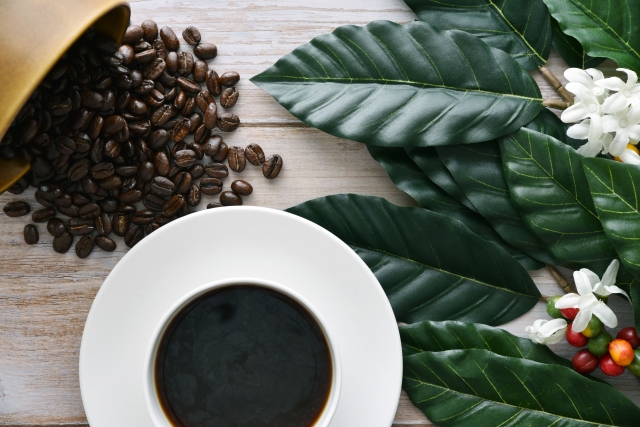
Yes, this is Colorful Beans.
In this article, I would like to delve deeper into the aroma and taste of coffee.
Are you familiar with flavor trees or flavor wheels?
They are tools used to organize and classify information about the taste and aroma of coffee.
The image below is a flavor wheel.
A flavor wheel is a circular diagram that represents the taste and aroma of coffee. By arranging elements in a diagrammatic form, it expresses the relationships between them. Flavor wheels are widely used in coffee evaluation and tasting competitions.
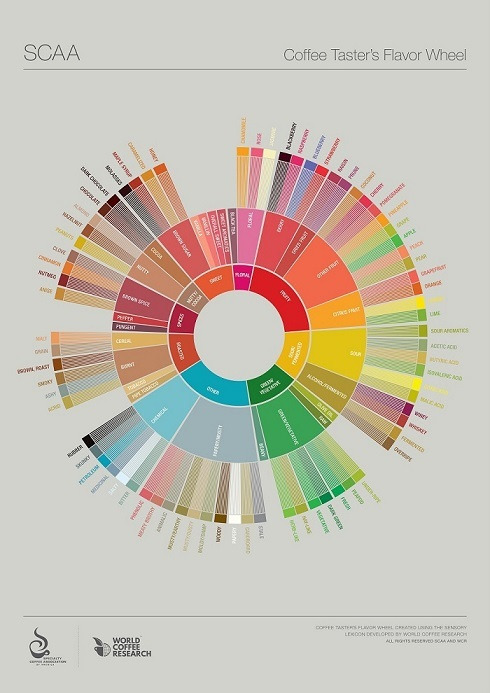
The image below is a flavor tree.
A flavor tree is a visual representation that classifies the components of taste and aroma in coffee. Typically, a flavor tree categorizes the taste and aroma of coffee into multiple elements, represented by branches and leaves of a tree. For example, fruity, nutty, chocolatey, floral, spicy, and various other flavors and aromas are classified as individual elements.

By using these tools, it is possible to analyze the taste and aroma of coffee objectively. Additionally, they provide useful information when evaluating the taste and aroma of coffee personally.
How is the aroma and taste of coffee created?
The flavors of coffee are created through combinations of chemical compounds.
The main components found in coffee beans include caffeine, chlorogenic acids, and trigonelline. These components undergo decomposition and changes when exposed to heat during the roasting process. They transform into multiple organic acids and phenolic compounds, such as cyclopentanepropionic acid, cinnamic acid, coumaric acid, and caffeoylquinic acids.
These transformations give rise to various flavors in coffee. Carbonized components contribute to flavors reminiscent of roasted nuts and chocolate.
During the extraction process, coffee flavors also develop. For instance, variations in water temperature and extraction time can alter the ratio of bitterness compounds and acidity compounds present in the coffee, thereby influencing its taste and aroma.
In other words, coffee flavors arise from chemical changes, and by employing different techniques during roasting and extraction, it is possible to control the taste and aroma of coffee.
Effects of trees planted alongside coffee trees
Crops and trees that are planted together in coffee farms can indeed influence the aroma and taste of coffee.
For example, in farms where fruit orchards are located near coffee plantations, the aroma of the fruits can impact the coffee. Particularly, when citrus fruits such as oranges, lemons, and grapefruits are adjacent to coffee fields, compounds like limonene and linalool emitted from their peels are known to influence the aroma and flavor of coffee. Additionally, the branches and leaves of trees can also have an impact on coffee cultivation. Trees often planted in coffee fields, for instance, can affect the coffee through the fragrance of their flowers.
Furthermore, environmental factors such as microbial diversity in the soil and biodiversity in the farm can potentially impact the taste and aroma of coffee. The soil and vegetation are believed to play a role in determining the flavor and aroma of coffee.
In coffee farms, it is common to find fruit trees like oranges, apples, and bananas planted alongside coffee trees. In some cases, they are even planted in an alternating pattern. This practice serves multiple purposes, including not only flavor development and diversification but also generating additional income beyond coffee harvesting.
What are the influences of the surrounding trees and flowers?
Coffee trees produce flowers.
The impact of pollination, carried out by bees and other insects, on flavor development in coffee is not yet fully understood scientifically. It is suggested that certain volatile substances are released, and these may potentially transfer their aroma to the coffee beans through pollination by bees and other insects.
Observations in coffee-producing regions and scientific research have indicated the potential influence of coffee flowers and pollination on flavor development. Differences in bean growth and quality have been reported. Some studies have also suggested that coffee flowers and pollination are one of the factors that can affect the taste and aroma of coffee beans.
However, the flavor of coffee is influenced by various factors, and the extent to which flowers and pollination contribute to these factors is not yet fully resolved. As the specific impact has not been clearly established, it is not possible to definitively conclude at this point that “flowers and pollination affect the flavor of coffee.”
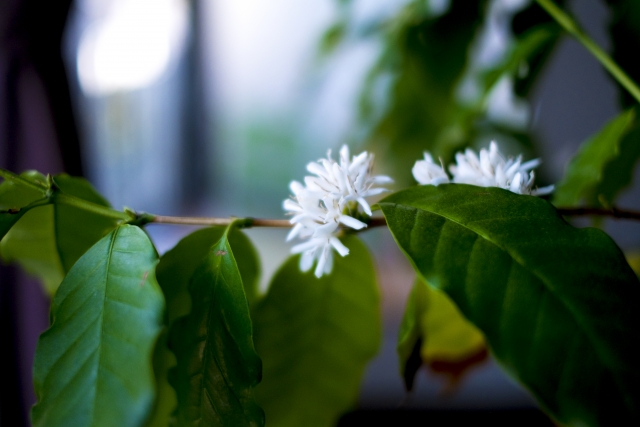
These are the flowers blooming on coffee trees, and when they bloom abundantly throughout the farm, it can create a sight reminiscent of a blanket of snow. The white blossoms in subtropical regions are truly beautiful to behold.
Effect of refining method on aroma and taste
Let’s now consider the impact of the processing methods carried out after coffee harvesting.
Please note that even with the same processing methods, variations can occur depending on the country, region, and farm, so it is not possible to provide detailed explanations for each case. Thank you for your understanding.
washed
The Washed method involves washing away the pulp and mucilage layer of coffee beans with water before drying them. This method ensures that no microorganisms or enzymes from the pulp and mucilage remain on the beans, resulting in a clearer flavor and taste profile of the coffee beans. Coffee processed using the Washed method is known for its bright and clean acidity, often exhibiting fruity aromas and flavors.
The fermentation process in the Washed method significantly influences the flavor and taste of coffee beans. It is during this fermentation process that the distinctive flavors and tastes of coffee beans are developed.
During the fermentation process in the Washed method, the sugars present in the pulp and mucilage are broken down by bacteria and yeast, resulting in the production of amino acids and saccharides. Additionally, the fatty acids and fermented phenolic compounds on the surface of the beans undergo changes that can influence the aroma and flavor of the coffee.
The fermentation process is crucial for coffee producers as it can significantly impact the flavor and taste of the coffee, depending on factors such as temperature and fermentation time.
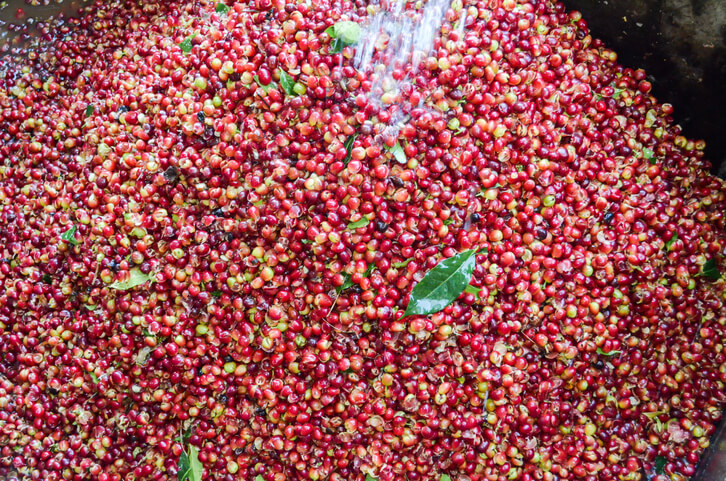
natural
The Natural method involves drying the coffee beans along with the pulp. In this method, the beans receive nutrients directly from the pulp, which contributes to the development of unique flavors and tastes.
Natural-processed coffee is known for its fruity aroma and flavor. Since the beans obtain nutrients directly from the pulp, it is not uncommon to perceive aromas and flavors reminiscent of fruits like strawberries, blueberries, and raspberries in Natural-processed coffees.
However, it’s important to note that variations can occur in the drying process of Natural-processed coffees, depending on the specific techniques employed.
The nutrients from the pulp adhere to the surface of the beans, and these nutrients undergo changes during the drying process, which can affect the flavor and taste of the coffee beans. The temperature and airflow during the drying process have a significant impact on the flavor and taste of the beans.
For example, if the temperature during the drying process is high, the nutrients from the pulp on the bean’s surface may undergo degradation, leading to a burnt flavor. This can also contribute to the growth of bacteria, negatively impacting the flavor and taste.
In this way, the drying process of natural processing plays a significant role in infusing the flavor and taste into the coffee beans, requiring producers to properly manage factors such as temperature and humidity. This stage relies on the experience and skills of the producers due to the significant impact it can have.
While the washed process also involves a drying stage, the influence is generally considered to be less pronounced compared to the natural process because the pulp is removed. However, in the case of the honey process, where some mucilage is left intact, the drying process can still have a notable impact.
In the case of drying coffee beans in Brazil, where they are spread out on the ground, it is often described with terms like earthiness or earthy flavors. However, in the case of African beds where the beans are raised on racks, distancing them from direct contact with the ground, such expressions are less common.
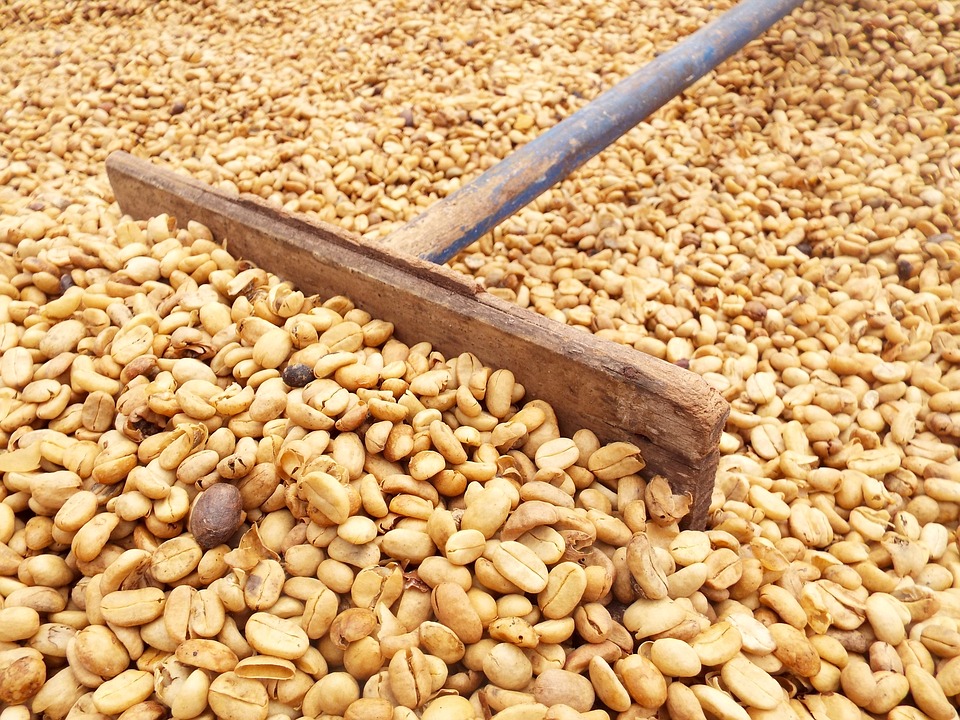
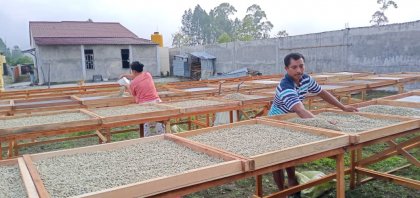
Other techniques
When it comes to expressing woody flavors and aromas in coffee, there are various factors involved, such as the Maillard reaction and the influence of the roasting process. These elements contribute to the perception of a woody character. However, it’s important to note that the flavors in coffee are not solely derived from natural sources.
In recent years, anaerobic processing has become more popular, and it could also be described as intentionally adding aromas through human intervention. However, since it utilizes naturally occurring microorganisms like yeast, it can still be considered as having a natural origin, as it creates a specific environment using naturally derived microorganisms.
The world of coffee is truly complex and fascinating, isn’t it? 😄

One particularly popular flavor within the renowned “Lion Coffee” brand, known for its flavored coffees, is the “Vanilla Macadamia Nut” flavor. Lion Coffee is a coffee roaster based in Hawaii and specializes in producing unique flavored coffees. The Vanilla Macadamia Nut flavor is recognized for its rich and sweet taste, enhanced with the flavors of vanilla and macadamia nuts.
The production method of flavored coffee typically involves the same processes as regular coffee beans, including cultivation, harvesting, processing, and roasting. Afterward, there are two common methods for adding flavor to the beans: one is coating the beans with flavoring, and the other is spraying the beans with flavor oils.
There are two methods for adding flavor to the beans. One method involves immersing the coffee beans in heated flavored syrup and allowing them to sit for a while before repeating the process with different syrups. This method allows the flavored syrup to be absorbed by the bean’s surface, resulting in even distribution of the flavor throughout the bean.
The other method is spraying the coffee beans with flavor oils. This involves evenly spraying the flavor oils onto the surface of the beans, ensuring that the beans are coated with the flavor. This method allows the flavor to permeate both the surface and the interior of the beans.
Both methods effectively impart a rich aroma and flavor to the coffee beans by adding the desired flavor elements.
The flavors used in flavored coffee can be both natural and artificially created. Natural flavors are extracted from natural ingredients, while artificial flavors are chemically synthesized and created using unique formulations.
Regardless of whether the flavors are natural or artificially created, this method can be described as artificially producing aromas and flavors.
Additionally, soaking coffee beans in beverages such as wine or kiwi juice allows the coffee to absorb the distinct aromas and flavors of those beverages. This technique is known to alter the flavor profile of the coffee, providing a more complex and profound taste experience.
The method of soaking coffee beans in wine involves placing the wine and coffee beans in a sealed container and allowing them to soak for several days to several weeks. During this process, the flavors of the wine absorbed by the coffee beans harmonize with the aroma and taste of the roasted coffee beans, creating a unique flavor profile.
For soaking coffee beans in kiwi juice, the coffee beans are placed in a container with the kiwi juice and soaked for overnight to several days.
However, it is important to note that when soaking coffee beans, excessive moisture or prolonged soaking can compromise the flavor of the coffee beans, so caution is necessary.
It should be noted that this method is often considered more of a personal preference or experimental endeavor rather than a common practice. However, recently there have been instances where this technique has been used with Colombian coffee.
“The following text is quoted from Mr. Yasumi Iwasaki’s YouTube channel.”
“Colombia Kiwi Fermentation is a continuation from last month, featuring the prestigious La Luisa Estate’s special beans! It is a coffee that showcases the flavors created through a process called infused coffee, where something other than coffee is immersed during the refinement process. This time, we introduce coffee that has been fermented by soaking it with kiwi! It is a coffee that NOUDO is introducing for the first time, and I believe it offers a taste unlike anything you have experienced before. Please try savoring it slowly, from high to low temperatures!”
Note: The translation assumes that “NOUDO” refers to a brand or organization, and “high to low temperatures” implies enjoying the coffee at different temperature ranges.
I understand that you previously purchased the Colombia Luisa Farm Kiwi coffee from WAKOcoffee, but it seems that it is currently sold out and unavailable on their shopping page.
Various attempts and experiments are being made from different angles in the coffee industry to revitalize it and provide new flavors and services. It is evident that there are ongoing efforts to explore how to activate the coffee industry and offer innovative tastes and services.
*WAKOcoffee refers to the name of a retail store selling freshly roasted coffee beans.
Postscript
How was this article?
While I couldn’t cover everything, my main goal was to convey the passion for enjoying coffee through various initiatives. If I managed to communicate that, then my article was a great success!
I hope that new flavors and colors will be added to everyone’s coffee life.
Goodbye.




コメント